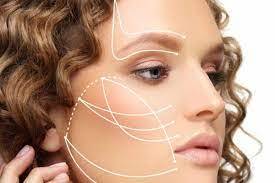How to dissolve pdo threads faster? If you’ve undergone PDO thread lift procedures in the past but are now considering removing them, it’s essential to understand the process and the best practices for PDO thread removal. PDO (Polydioxanone) threads are a popular non-surgical treatment used to lift and tighten the skin. However, there might be situations where removal becomes necessary due to various reasons. In this article, we’ll explore the key aspects of PDO thread removal, its procedure, and important aftercare tips.
Understanding PDO Threads and Their Uses:
What are PDO Threads?
PDO threads are absorbable sutures made from Polydioxanone, a biocompatible material widely used in various medical applications. They are inserted into the skin to provide support and lift sagging areas, effectively reducing the signs of aging. PDO threads stimulate collagen production, contributing to long-lasting results.
Common Uses of PDO Threads
PDO threads are commonly used to address concerns such as facial sagging, wrinkles, and loose skin. They can target specific areas, including the eyebrows, cheeks, jawline, and neck, providing a more youthful appearance without the need for surgery.
PDO Thread Removal – A Necessary Process:
Reasons for PDO Thread Removal
While PDO threads typically provide excellent results, there are instances where removal becomes necessary. Some common reasons for removal include patient dissatisfaction with the results, migration or palpability of the threads, and the need for more advanced rejuvenation procedures.
Preparing for Removal
Before undergoing PDO thread removal, it is crucial to consult with a qualified professional. They will assess the condition of the threads, your skin, and discuss your expectations and concerns. Understanding the process and managing expectations is vital for a successful removal procedure.
The PDO Thread Removal Procedure:
Anesthesia and Pain Management
During PDO thread removal, local anesthesia is administered to ensure your comfort throughout the procedure. The treatment area is numbed to minimize any potential discomfort.
Removal Technique The removal technique employed will depend on the type of PDO threads used and their placement. The threads are carefully extracted, considering factors such as thread absorption and tissue reaction.
Recovery Process After the removal procedure, there might be some mild swelling and bruising, which is normal and should subside within a few days. It’s crucial to follow the aftercare instructions provided by the professional to promote healing and minimize potential risks.
Risks and Complications of PDO Thread Removal:
Common Risks As with any medical procedure, PDO thread removal carries some risks, although they are generally minimal. Risks include bruising, swelling, infection, and rare instances of thread migration.
How to Minimize Risks To minimize the risks associated with PDO thread removal, it is essential to choose a skilled and experienced practitioner. Additionally, following the pre and post-removal instructions diligently can significantly reduce the likelihood of complications.
Aftercare and Recovery:
Post-Removal Instructions After PDO thread removal, it’s essential to take proper care of the treated area. Avoid massaging or manipulating the skin and follow any specific instructions given by your practitioner.
Tips for a Smooth Recovery To support the healing process, maintain a healthy lifestyle, including a balanced diet, staying hydrated, and avoiding excessive sun exposure. These measures can contribute to a smoother and quicker recovery.
Alternative Options to PDO Thread Removal:
Non-Surgical Alternatives If you’re not ready for PDO thread removal or looking for non-surgical alternatives, there are various options available, including dermal fillers, laser treatments, and radiofrequency-based procedures.
Other Thread Types In the field of aesthetic medicine, there are different types of threads used for lifting and tightening the skin. Silhouette threads, for example, offer another viable option for those seeking non-invasive facial rejuvenation.
Choosing a Qualified Professional for PDO Thread Removal:
When considering PDO thread removal, it’s crucial to choose a qualified and experienced professional. Look for practitioners who are certified and have a proven track record of performing successful removal procedures.
Conclusion:
PDO thread removal is a valuable option for individuals who are unsatisfied with their PDO thread lift results or experience complications. Understanding the process, risks, and recovery is essential for making an informed decision. By choosing a skilled practitioner and following aftercare guidelines, you can optimize the outcomes of PDO thread removal and achieve your desired aesthetic goals.








